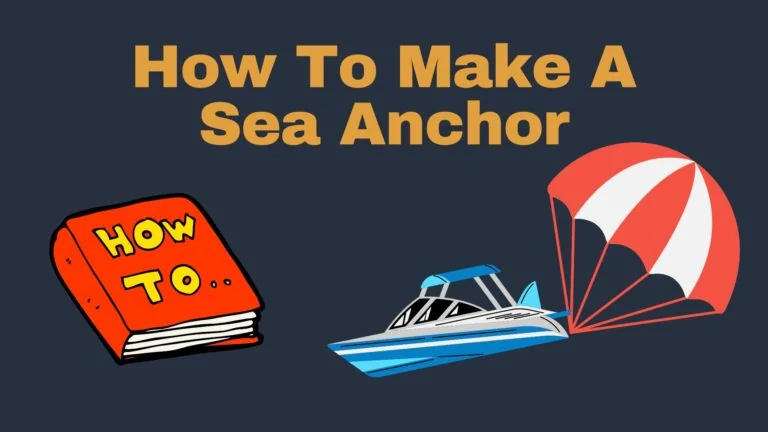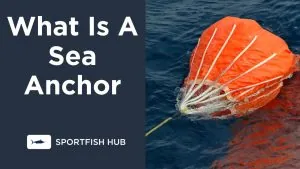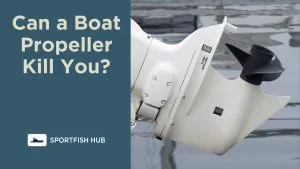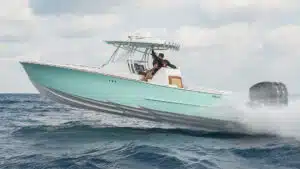A sea anchor, also known as a drift anchor, is an essential piece of equipment for any boating enthusiast. It can help you maintain control of your vessel in rough seas, provide stability in storms, and reduce drift when fishing or waiting out foul weather.
In this article, we’ll delve into the world of sea anchors and provide you with a step-by-step guide on how to make one yourself.
Table of Contents
- Low-Cost DIY Sea Anchor Alternatives
- Materials and Tools Needed To Make A Sea Anchor
- Creating Your Sea Anchor
- Deploying and Using Your Sea Anchor
- Maintenance and Care
- FAQ
- What are the different types of anchors for boats?
- How do I choose the right size anchor for my boat?
- What is the purpose of a drogue on a boat?
- What materials are best for making a DIY boat anchor?
Low-Cost DIY Sea Anchor Alternatives
For those who are looking for cost-effective alternatives to traditional sea anchors, here are a few suggestions based on popular forum posts. Keep in mind that these DIY options might not provide the same level of effectiveness as purpose-built sea anchors, especially in emergency situations or rough conditions.
1. Five-Gallon Bucket
A simple and affordable option is to use a five-gallon bucket as a makeshift sea anchor:
- Drill a few 1-inch holes in the bottom of the bucket.
- Attach a line to the bucket handle.
- Cleat off the line to your boat.
2. Sunbrella Fabric Sea Anchor
Another low-cost solution is to repurpose a piece of Sunbrella fabric:
- Cut a square or rectangular piece of Sunbrella fabric.
- Attach grommets to each corner of the fabric.
- Connect lines to the grommets and join them at a central point.
- Attach the central point to your boat.
3. Vinyl Bag Sea Anchor
A 36-inch vinyl bag, available at stores like Dick’s Sporting Goods for around $30, can be used as a sea anchor:
- Fill the bag with a small amount of water or other weights to increase its drag.
- Attach a line to the bag handle.
- Secure the line to your boat.
4. Drift Sock or Trolling Bag
Some off-the-shelf products, such as drift socks or trolling bags from Amish Outfitters or Cabela’s (ranging from $29.99 to $100), can serve as sea anchors in certain situations:
- Choose a drift sock or trolling bag suitable for your boat’s size.
- Attach the provided line or an additional line to the product.
- Secure the line to your boat.
When deciding on a DIY sea anchor, consider the conditions in which you’ll be using it and the potential limitations of these alternatives. A properly sized and built sea anchor may be the safest and most effective choice for more demanding situations.
Materials and Tools Needed To Make A Sea Anchor
To make a sea anchor, you’ll need the following materials:
- Heavy-duty fabric (such as canvas, nylon, or polyester)
- Strong nylon rope (about 3 times the length of your boat)
- Stainless steel swivel
- Stainless steel or galvanized shackle
- Nylon webbing (optional for reinforcement)
And the following tools:
- Sewing machine (heavy-duty, if possible)
- Scissors
- Measuring tape
- Marker
Creating Your Sea Anchor
Follow these steps to make your sea anchor:
- Measure and cut the fabric: Determine the size of your sea anchor based on the size of your boat. A general rule of thumb is that the diameter of the sea anchor should be roughly equal to the length of your boat. Measure and cut the fabric accordingly.
- Sew the fabric: Sew the edges of the fabric to create a cone or parachute shape. Be sure to use strong, weather-resistant stitching.
- Reinforce the edges (optional): For added durability, you can sew nylon webbing along the edges of the sea anchor.
- Attach the rope: Cut a length of rope about three times the length of your boat. Attach one end of the rope to the sea anchor using a stainless steel swivel. This will help prevent the rope from twisting while in use.
- Add the shackle: Attach the other end of the rope to the shackle, which will connect to your boat’s cleat or bow eye.
Deploying and Using Your Sea Anchor
To deploy your sea anchor:
- Attach the shackle to your boat’s cleat or bow eye.
- Slowly lower the sea anchor into the water, allowing the rope to pay out as it sinks.
- Adjust the rope length to suit the conditions and desired drift rate.
To retrieve your sea anchor:
- Carefully haul in the rope, being mindful of any strain or twisting.
- Once the sea anchor is close to the boat, lift it out of the water and allow it to drain.
Maintenance and Care
To ensure the longevity of your sea anchor, follow these maintenance tips:
- Rinse your sea anchor with fresh water after each use to remove salt and debris.
- Inspect the fabric, rope, and hardware regularly for signs of wear or damage.
- Store your sea anchor in a cool, dry place away from direct sunlight.
With proper care, your homemade sea anchor should provide reliable service for many trips to come. Keep in mind that even with proper maintenance, DIY sea anchors may have a shorter lifespan than their commercial counterparts.
FAQ
-
What are the different types of anchors for boats?
There are several types of anchors including fluke anchors, plow-style anchors, mushroom anchors, and grapnel anchors. The choice depends on the size of your boat and the seabed conditions.
-
How do I choose the right size anchor for my boat?
The size of the anchor should be based on the size and weight of your boat. As a general rule, use an anchor that weighs roughly 1 pound for every foot of boat length.
-
What is the purpose of a drogue on a boat?
A drogue, similar to a sea anchor, is used to stabilize a boat in heavy weather. It’s deployed from the stern and creates drag, slowing the boat’s drift and keeping the stern pointed towards the waves.
-
What materials are best for making a DIY boat anchor?
Durable, heavy materials like steel or iron are commonly used for DIY boat anchors. The choice of material also depends on the type of seabed where you’ll be anchoring.
Conclusion
Creating a sea anchor can be an engaging and rewarding DIY project, offering both cost savings and a sense of accomplishment. From choosing materials and construction methods to maintaining your sea anchor, this guide has covered the essential steps to ensure your homemade sea anchor is both effective and durable. Remember, a purpose-built sea anchor might be the best option in emergencies or rough conditions. When venturing out on the water, always prioritize safety and ensure you have the appropriate equipment for your conditions.












